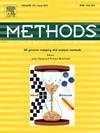利用蛋白质语言模型进行稳健的抗菌肽检测。
IF 4.3
3区 生物学
Q1 BIOCHEMICAL RESEARCH METHODS
引用次数: 0
摘要
抗菌肽(AMPs)由于其广谱抗菌特性而成为解决抗生素耐药性全球挑战的有希望的候选者。传统的AMP识别方法虽然有效,但费时费力。深度学习和大型语言模型(llm),特别是蛋白质语言模型(plm)的最新进展为AMP预测提供了一种变变性的方法。在这项研究中,我们提出了PLAPD,这是一个利用预训练ESM2蛋白语言模型进行AMP分类的新框架。此外,PLAPD结合了卷积层的局部特征提取和残差Transformer模块的全局特征提取。我们使用包含8,268个肽序列的数据集将PLAPD与最先进的AMP预测模型进行基准测试,在准确度(0.87),精度(0.9359),特异性(0.9456),MCC(0.7486)和AUC(0.9225)方面取得了优异的表现。这些结果突出了PLAPD作为发现AMP的高通量和精确工具的潜力。本文章由计算机程序翻译,如有差异,请以英文原文为准。
Leveraging protein language models for robust antimicrobial peptide detection
Antimicrobial peptides (AMPs) are promising candidates for addressing the global challenge of antibiotic resistance due to their broad-spectrum antimicrobial properties. Traditional AMP identification methods, while effective, are labor-intensive and time-consuming. Recent advancements in deep learning and large language models (LLMs), especially protein language models (PLMs) present a transformative approach for AMP prediction. In this study, we propose PLAPD, a novel framework leveraging a pre-trained ESM2 protein language model for AMP classification. Besides, PLAPD combines local feature extraction via convolutional layers and global feature extraction with a residual Transformer module. We benchmarked PLAPD against state-of-the-art AMP prediction models using a dataset comprising 8,268 peptide sequences, achieving superior performance in Accuracy (0.87), Precision (0.9359), Specificity (0.9456), MCC (0.7486), and AUC (0.9225). The results highlight the potential of PLAPD as a high-throughput and accurate tool for AMP discovery.
求助全文
通过发布文献求助,成功后即可免费获取论文全文。
去求助
来源期刊

Methods
生物-生化研究方法
CiteScore
9.80
自引率
2.10%
发文量
222
审稿时长
11.3 weeks
期刊介绍:
Methods focuses on rapidly developing techniques in the experimental biological and medical sciences.
Each topical issue, organized by a guest editor who is an expert in the area covered, consists solely of invited quality articles by specialist authors, many of them reviews. Issues are devoted to specific technical approaches with emphasis on clear detailed descriptions of protocols that allow them to be reproduced easily. The background information provided enables researchers to understand the principles underlying the methods; other helpful sections include comparisons of alternative methods giving the advantages and disadvantages of particular methods, guidance on avoiding potential pitfalls, and suggestions for troubleshooting.
 求助内容:
求助内容: 应助结果提醒方式:
应助结果提醒方式:


